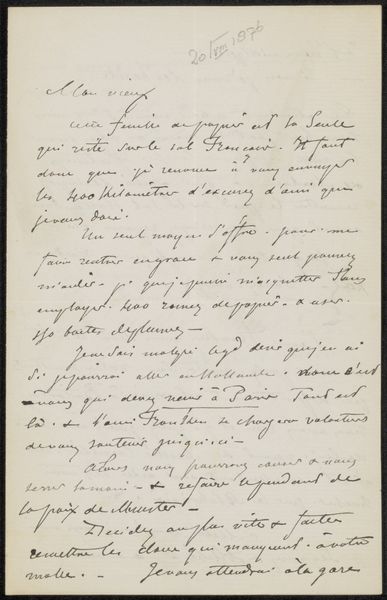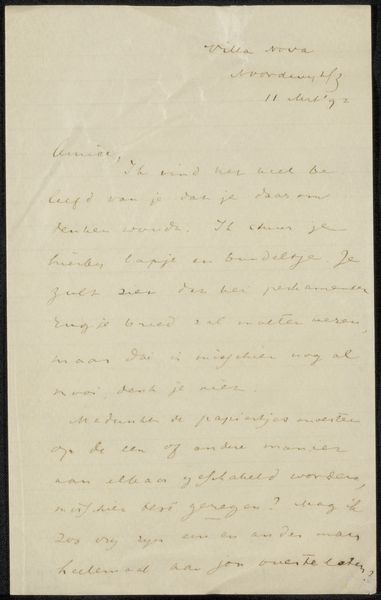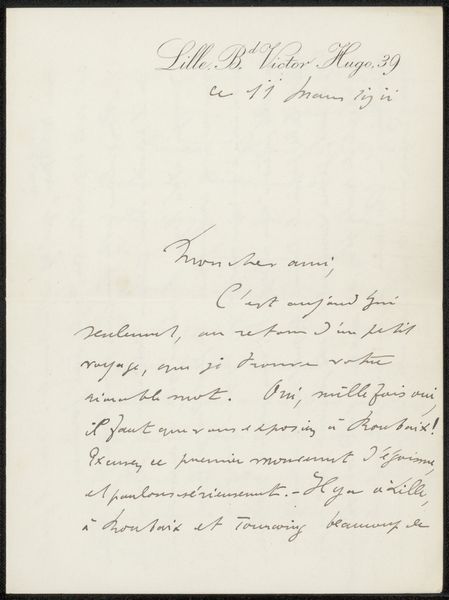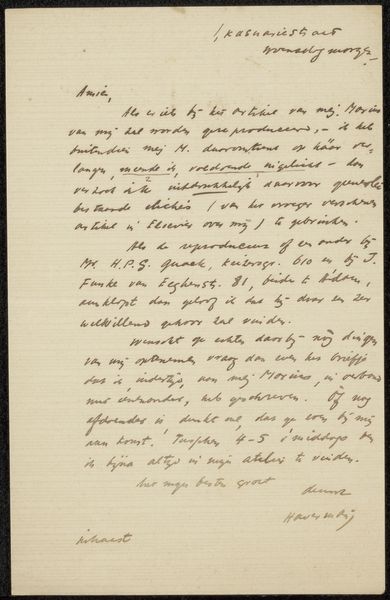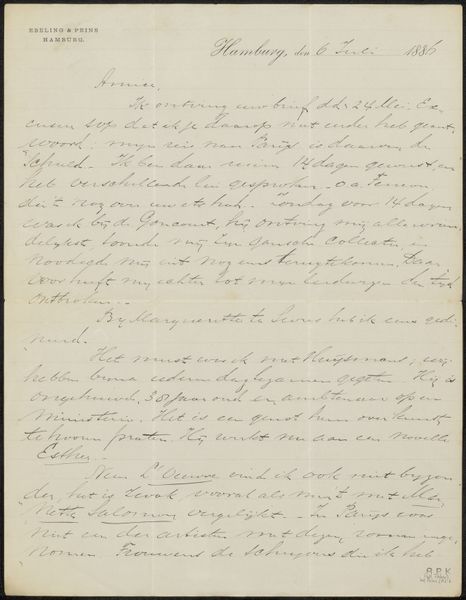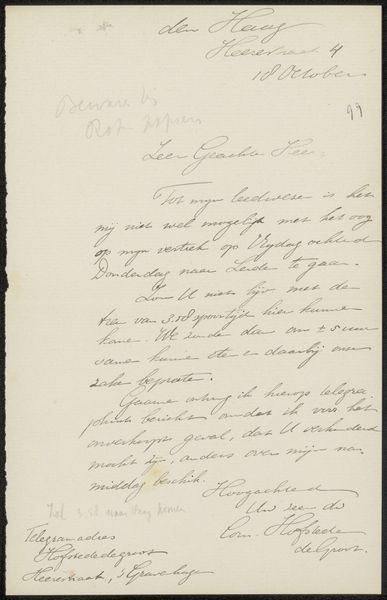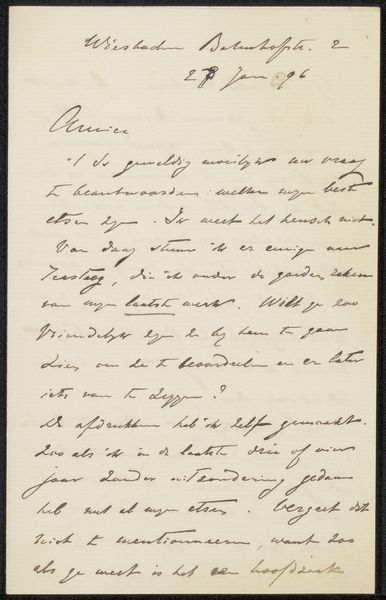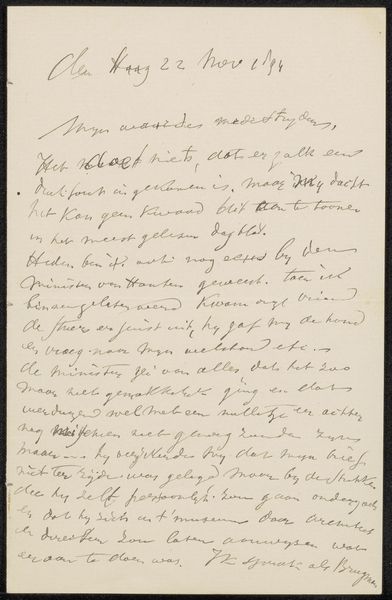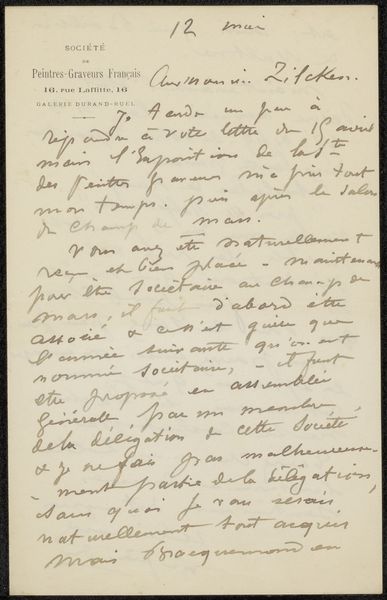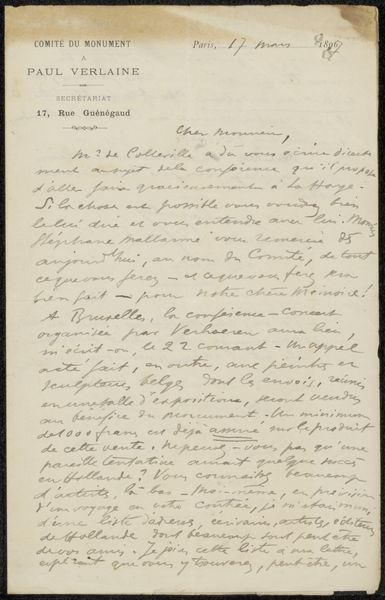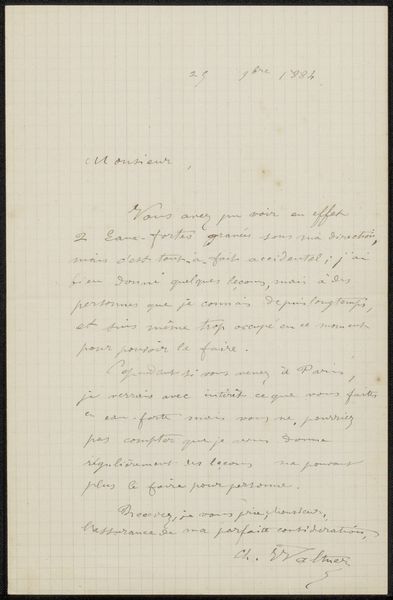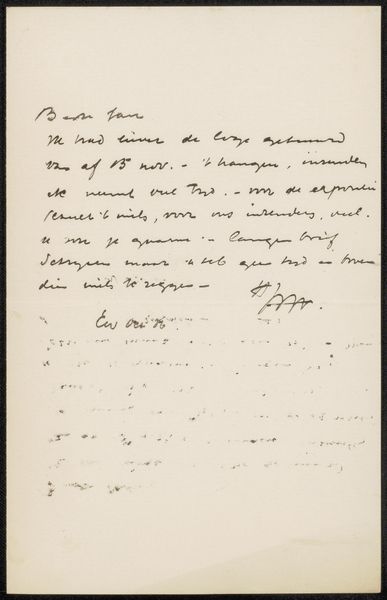
drawing, paper, ink, pen
#
portrait
#
drawing
#
paper
#
ink
#
pen
#
calligraphy
Copyright: Rijks Museum: Open Domain
Curator: Looking at Adolphe Mouilleron's "Brief aan Jan Hendrik Maschaupt," likely crafted between 1867 and 1868, I am immediately struck by the script itself. The looping, flowing nature creates a visual texture almost separate from its literal meaning. It’s beautiful, but beyond legibility almost. Editor: The very form emphasizes the personal exchange; paper, pen, and ink deployed in the act of communication. We must consider this object as both visual piece and practical correspondence: what statement does the aesthetic quality make regarding the maker’s position? Was this an object created with the end-user in mind or was it produced for art’s sake? Curator: That’s astute, the material considerations are certainly key here. But the elegance of the script, it borders on abstract art doesn't it? It’s not simply utilitarian; there's a conscious aesthetic choice here, a delight in the form itself. How can we untangle form and function here? The composition on the page too. Look at the way the lines spread down with a single, strong stroke signing it off at the end. It has an impact on the reading process and also its visual appreciation, no? Editor: Precisely. And this is key. What class position enables the time, skill and resources required to perform the kind of handiwork seen here? Are we simply considering the beauty of this text as an abstract component, or must we also bring ideas around accessibility, equality, privilege, and production of art into view? We must not let its appeal blind us to the socio-economic realities involved here. Curator: It brings up intriguing contradictions. We appreciate the beauty and yet must critically assess the system which facilitated its creation, while contextualizing what this form of social engagement meant within that period. How do we respond now to this artifact of a bygone process? Editor: By interrogating every angle! The materials tell one story, the letter’s contents perhaps another, but ultimately our job is to dissect not just what is visible, but also that which is absent; what are the gaps that encourage us to reflect and question the historical narrative? Curator: So, beyond its visual appeal as an object, lies an important lesson of labour and society and how something quite simple could still carry so much significance. Editor: Absolutely, and how each artistic piece contains so much. "Brief aan Jan Hendrik Maschaupt" provides us so much food for thought surrounding class and aesthetic intention, I believe, within a single sheet of paper.
Comments
No comments
Be the first to comment and join the conversation on the ultimate creative platform.
